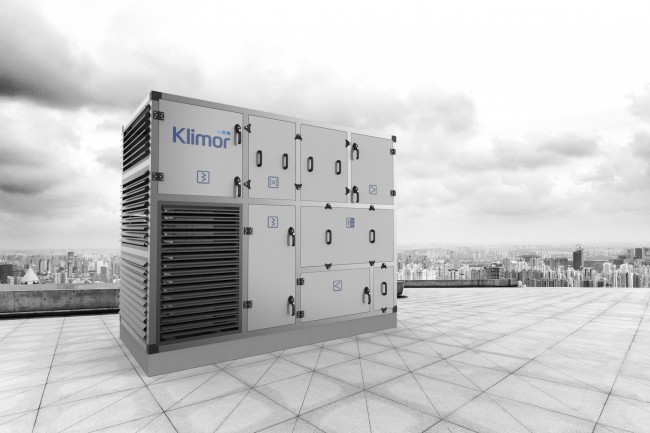During 17 meetings in various places in Poland, Klimor’s designers will attempt to answer 9 crucial questions which we hope will be an impulse to reflect on the actual performance of ventilation systems when confronted with calculation parameters.
Trends
Over more than 50 years of its history, Klimor was often the Polish precursor and promoter of solutions which gained acclaim among customers, became standard solutions of many manufacturers and, in time, became required by law.
An example is the use of heat recovery exchangers in ventilation and air conditioning units. Today, this solution is obvious, but in the 1980s and 1990s, spending additional investment funds for reduction of energy outlays seemed unnecessary. Although initially sceptical, Klimor’s engineers managed to persuade designers and investors to apply an innovative solution. In 2002, the use of energy from exhaust air was stipulated in the Regulation of the Minister of Infrastructure.
Today, growing expectations as to air quality in utility rooms force an increase in the number of exchanges of air for fresh one. This obviously results in a growing share of energy consumption by ventilation and air conditioning units in the total energy consumption in buildings.
This tendency was also noticed by the European Commission which, as part of Directive 2009/125/EC of the European Parliament and of the Council (referred to as ECODESIGN), introduced, in 2014, Regulation 1253/2014, combining the efficiency of the most important elements of ventilation systems in non-residential buildings, i.e. heat recovery efficiency, filtration performance and energy expenses for operation of fan drives, taking account of mutual impact of these elements on the efficiency of a device as a whole.
The contemporary awareness of limited fuel resources, globally growing CO2 emission and increasingly expensive energy in combination with an increase in demand for fresh air indicates that the Klimor’s work undertaken in the past in order to improve energy efficiency of ventilation systems in Poland was necessary, and has to be continued taking account of new solutions.
EVOlution
Klimor’s ambition is still to raise the standard and set out directions in its domain, therefore, based on experience and knowledge, Klimor’s offer undergoes EVOlution.
The new type series of Klimor EVO units has been designed with a view to
- reduction in heat bridges and better insulation parameters of the housing;
- more efficient use of heat recovery Io
- possibility to implement heat pump as heat recovery IIo
- better possibilities to match the cross-section of units,
- more efficient fans,
- highly efficient filtration at moderate resistance,
- more precise adjustment.
Current direction of Klimor – performance and efficiency
Promotion of innovations and capabilities of a new Klimor EVO product is also an opportunity to raise important issues influencing the entire ventilation system. They undoubtedly include performance and efficiency. These issues may seem familiar to us, but exploration of the topic and monitoring of current investments show a very high potential for changes which will yield measurable benefits in air quality in buildings and reduction in energy expenses during operation.


 Poland
Poland England
England German
German Sweden
Sweden Eastern Region
Eastern Region Spain
Spain

 Return to main menu
Return to main menu